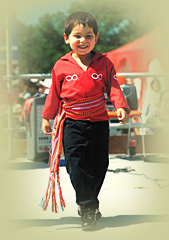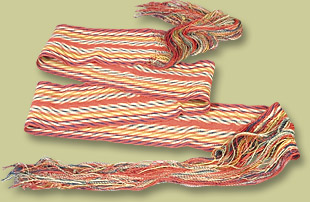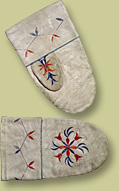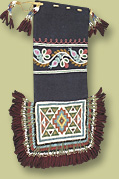|
|
Arrival of Strangers - The Last 500 YearsThe MétisDiversity"We are Métis, with roots and rights that extend 9,000 years into this continent. We are neither First Nations nor Inuit, nor are we European immigrants to this land. Instead, we are the middle-ground between camps; the compromise between differences and the dawn that separates night and day. We are not half-breeds, but the children born of a marriage between two very different worlds.... To be Métis is to be blessed with the best fruit of not one, but two family trees. We are not "half" of anything, but doubled. Being twice blessed, we are likewise proud, strong and determined." - Terry St. Amant, The Georgian Bay Métis Council of the Métis Nation of Ontario Web site Métis people from different parts of Canada and the United States expressed their identities in decorative arts and clothing. In the 1800s, design ideas were exchanged between the Great Lakes and Red River Métis, the Eastern Woods Cree, and the various Aboriginal peoples of the Plains, and the Dene of the Northwest Territories, Alberta, Saskatchewan and Manitoba. Métis also used design elements from French and British objects and clothing.
Métis decorative and clothing styles changed steadily through the 1800s and the twentieth century. Vibrant, colourful floral embroidery dominated Métis textile arts in the 1800s. By the mid-1900s, styles and materials had changed. The "old trade goods" obtained from Hudson's Bay Company stores were no longer available. In spite of widespread poverty, Métis women continued to make distinctive clothing. Métis creativity is still a vibrant force in the twenty-first century.
| ||||




